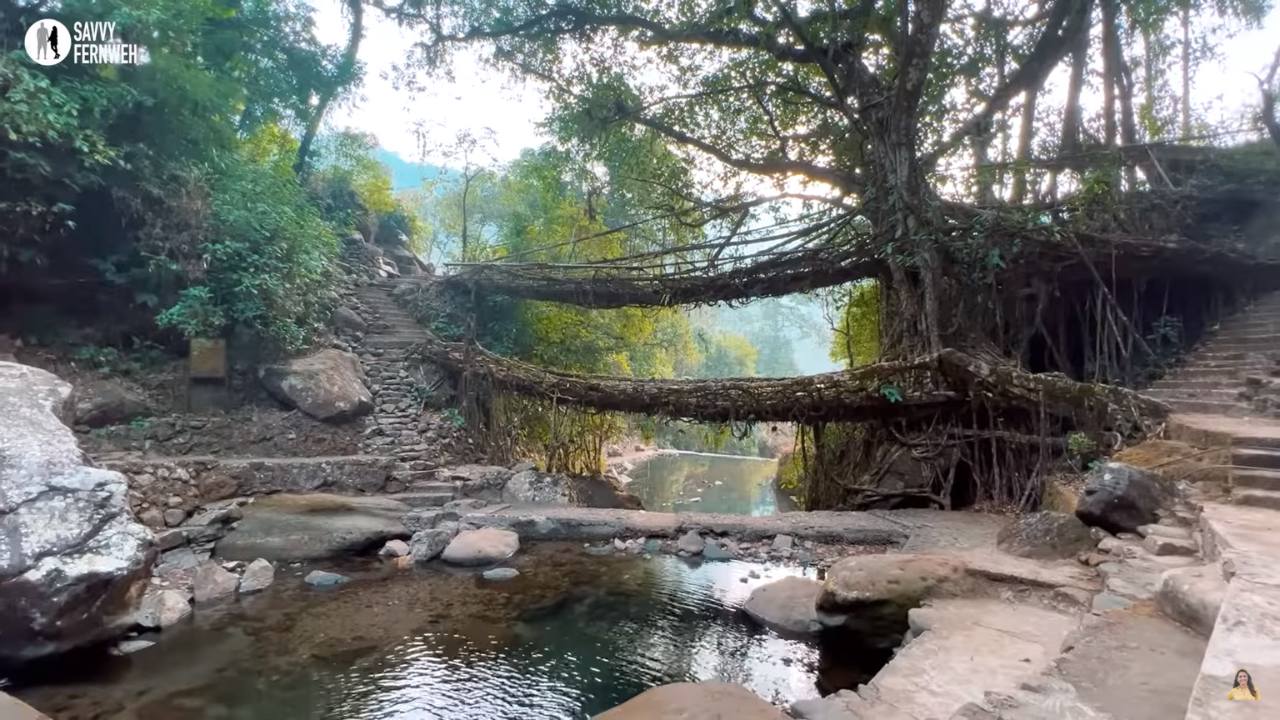Double Decker Living Root Bridge – Breathtaking Trek Through Cherrapunji Forest
The tribes of Meghalaya understand how crucial our relationship with nature is to human survival. Their efforts to bioengineer the living-root bridges scattered around Meghalaya are a reflection of their desire to live sustainably. The most well-known one, the attraction of the tourist in Meghalaya, is the Umshiang Double Decker Living Root Bridge, tucked away in Nongriat, a village in the East Khasi Hills region, among the thick trees. I’ll walk you through my experience at Nongriat in this article. Meghalaya is known as the country of live root bridges, but many may be found in Mawlynnong and the West Jaintia Hills district.
Where Is Meghalaya’s Double Decker Root Bridge?
To get you to this side of Meghalaya, many of the advertisements make it appear as though these living bridges are in Shillong or Cherrapunji.
The genuine root bridges are located in Nongriat, a tiny village in the East Khasi Hills. Due to its location deep within the hills’ jungle, you cannot take a taxi directly to this village. Therefore, you must travel to Tyrna Village, which is where the climb starts.
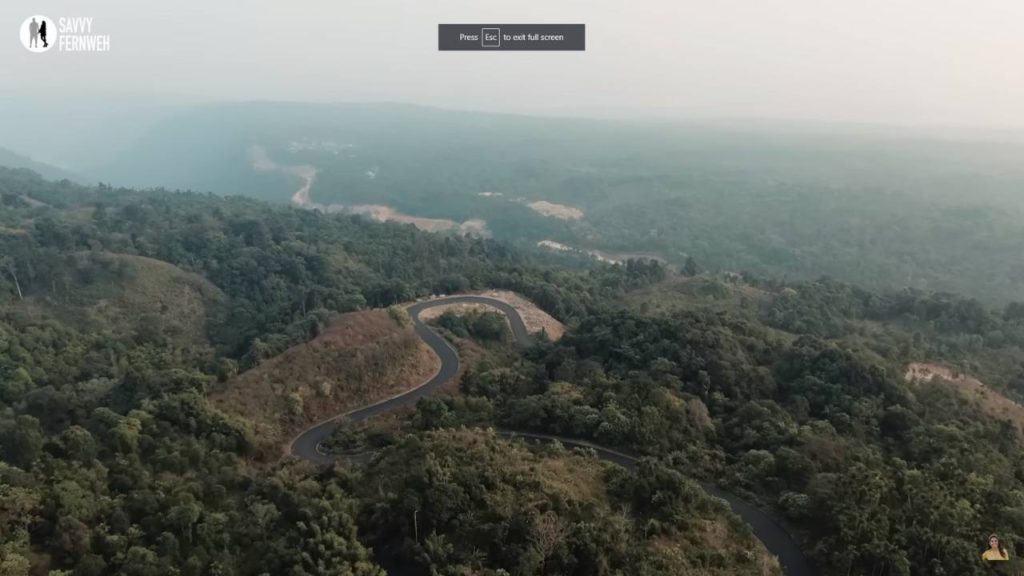
This is only a 20–30 minute drive away from Cherrapunjee (Sohra) and is easily accessible from there. Have a taxi wait for you if you’re not staying in Nongriat, though. There are absolutely NO taxis here to transport you back to Cherrapunjee when it gets dark (and this trek will take you the entire day).
Public taxis do travel in that direction from Cherrapunjee, but they are infrequent and won’t deliver you to the village of Tyrna. You will be dumped off at a turning point a good few kilometres distant. A challenging hike will need you to climb 3500 stairs in either direction to reach the Double Decker Root Bridge. It isn’t a joke.
When To Begin The Hike To The Living Bridge? How Much Time Does It Take?
This climb will take you pretty much the entire day if you’re staying in Nongriat Village. To get to the Double Decker root bridge, there are an additional 3,000 stairs on either side. A 1.5- 2 hour hike.
Plus, it gets dark at 4 pm during the winter peak season. You must take a guide with you if you want to hike after 5 o’clock; you cannot hike alone. Before beginning the hike, you can leave your car at the car park. The cost of parking is 120 rupees.
You can begin your adventure as soon as you like.
Accommodations Available Near The Double Decker Root Bridge:
You have the option of going back to Cherrapunjee and staying in cherrapunji hotels or lower down in Nongriat, a lovely village. It is an epic excursion that is difficult to complete in a single day. In Nongriat, there are numerous options for inexpensive lodging. The best guest house is called “Serene.” This homestay is located in Nongriat, a picturesque village in Meghalaya. A 3- kilometre hike over approximately 3500 stairs, a few metal bridges, and one root bridge is the only way to get to this homestay. To get to this guest house, it takes a good two hours of hiking.
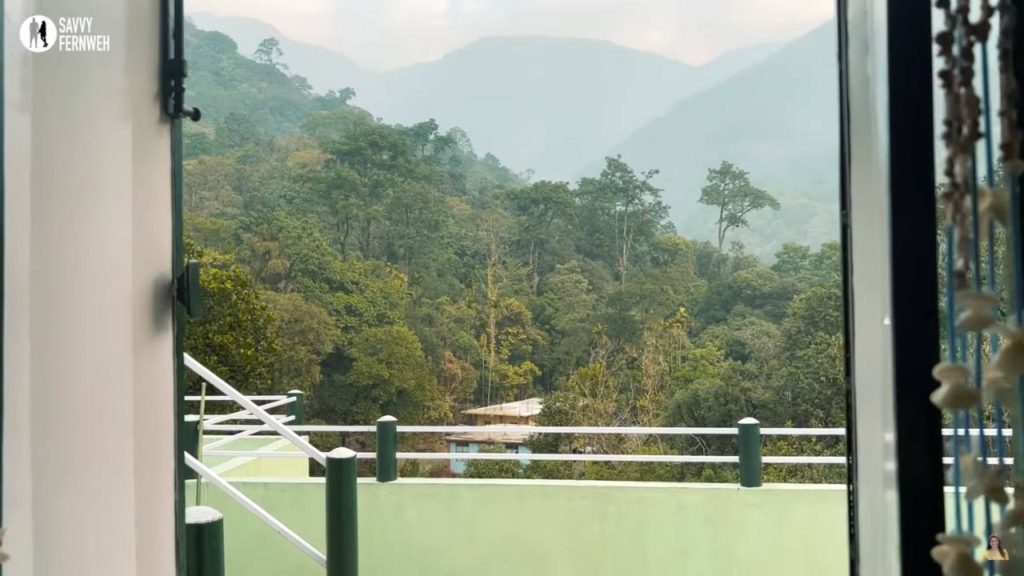
Travellers shouldn’t anticipate luxurious A/C rooms here. Except for a few rooms with twin beds, the rooms here are largely dormitories. It’s for vacationers who wouldn’t mind just having a bed, a table, and a fan. Even the communal bathrooms, which were shared by all guests, were quite clean and well-maintained. Don’t worry if you started your walk later than expected; you can still enjoy the supper and lovely local music. You’ll like the food here if you prefer eating regional cuisine. Dal, rice, and a variety of regional vegetable dishes are provided as part of the dinner buffet.
Explore The Magnificent Wire Bridges And Discover The Jade Waters Below:
Aside from discovering the root bridges, the favourite part of the walk was traversing the wire bridges. On this trip, you pass two that are both lovely and merit a pause. The bridge always spans the river that runs through this area.
It was some of the most stunning blue water you had ever seen, looking down. The best tourism place in Meghalaya with breathtaking scenic views. Crossing the bridges requires caution, so be sure to do it. One group at a time only.
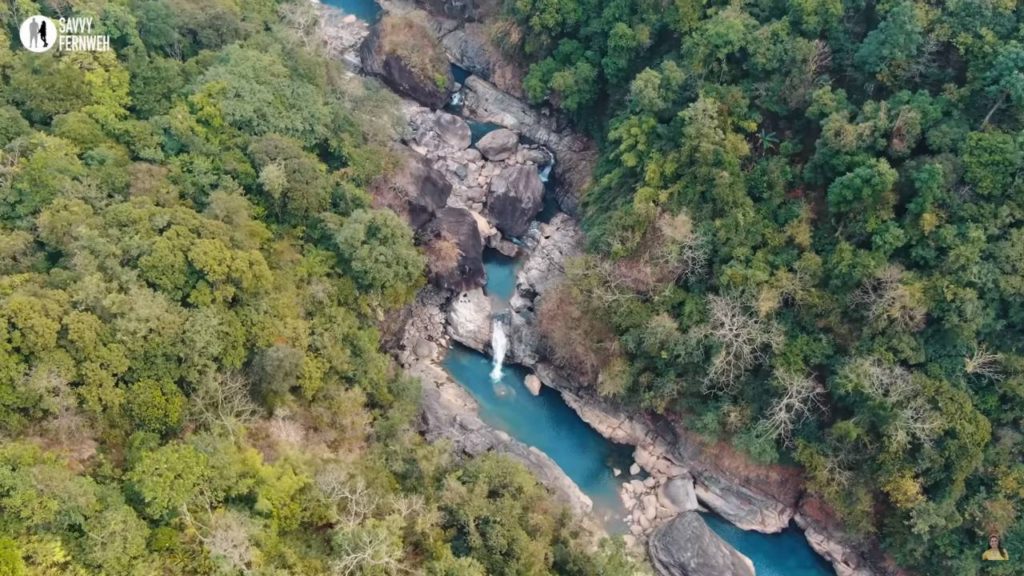
There are a couple of them in addition to the Double Decker Root Bridge, and you even cross some of them en route! Personally, I felt it appeared to be a scene from a fairy tale
While you’re here, take a break and set aside some time to explore the neighbourhood.
The Double Decker Root Bridge:
To construct what are now known as living root bridges, the great brains of the indigenous people used the durability and strength of nature. Rubber tree aerial roots—officially known as Ficus elastica—were combined with betel nut tree trunks to create a roadway. These roots eventually intertwined and became thicker, creating a natural bridge. Some of these bridges allegedly date back more than 500 years. The durability of these constructions is insane. This is the main attraction of the tourist place Meghalaya.
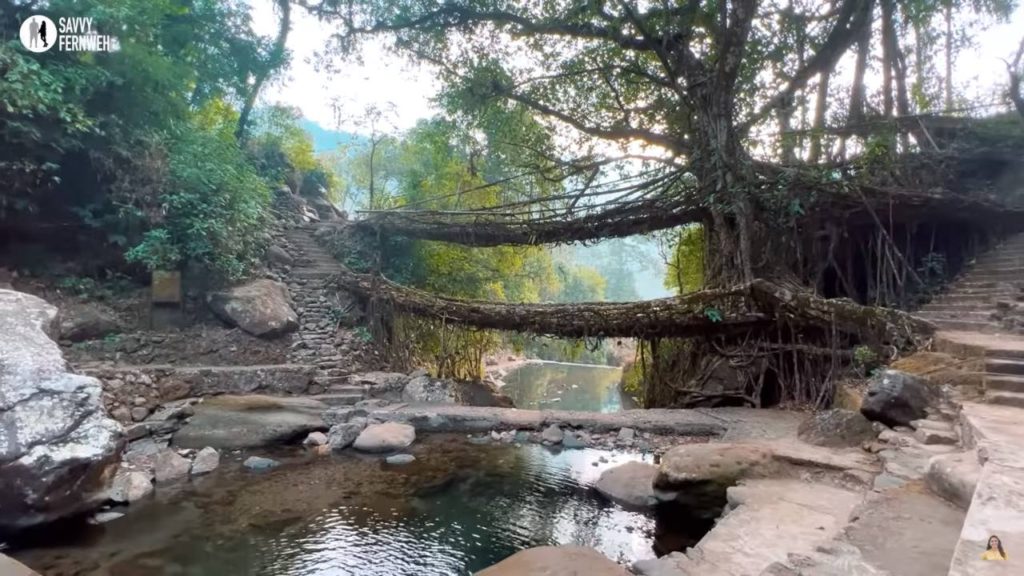
The bridge is decked out with wooden planks to make it more convenient for pedestrians. This is the first time I’ve seen anything like that, and the root bridge is really more sturdy than the suspension bridge.
Cross the bridges to the opposite side to view the roots! After a long hike, immersing your feet in the clear, cool water and enjoying a natural fish spa is the ideal remedy for swollen feet.
As soon as you put the fish in, they will nip at your feet. It needs to be done and feels oddly pleasant. Even better, it’s organic and cost-free.
Begin The Arduous Return Trek:
You can stay as long or as short as you like at the Double Decker Root Bridge, but be careful if you need to get back home. You really don’t want to be left to go hiking in the dark.
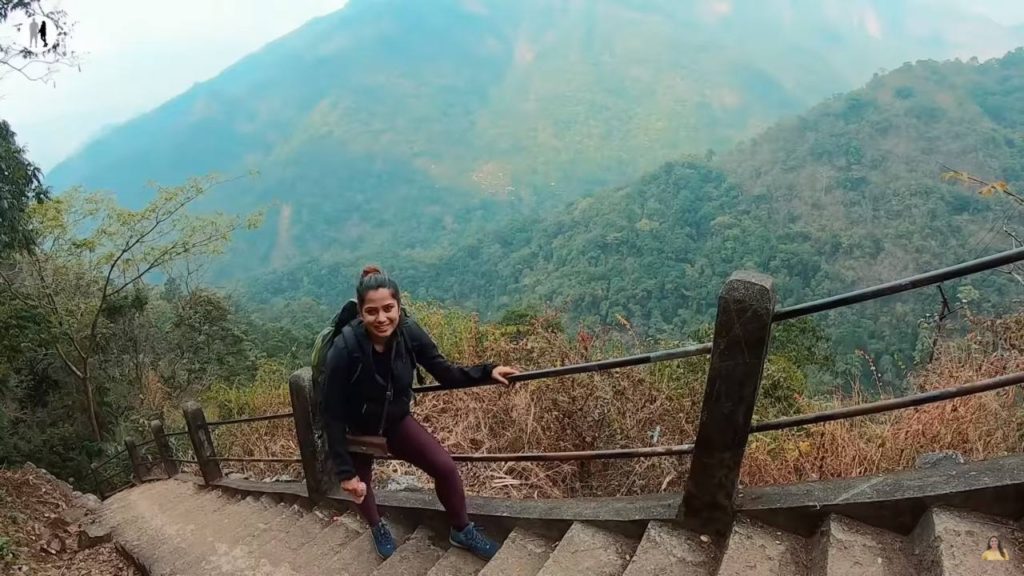
Plan your route properly because walking up will take longer than walking down. Don’t worry; there are numerous tiny stalls providing refreshments and food along the entire journey. Take a break and rehydrate yourself by drinking some lemon water.
Single-Decker Living Root Bridge:
Trekking a path that departs from the village of Riwai will bring you to the single decker root bridge. This small community is located in Mawlynnong, a picturesque paradise that gained notoriety in 2003 after being named Asia’s Cleanest Village by Discover India magazine.
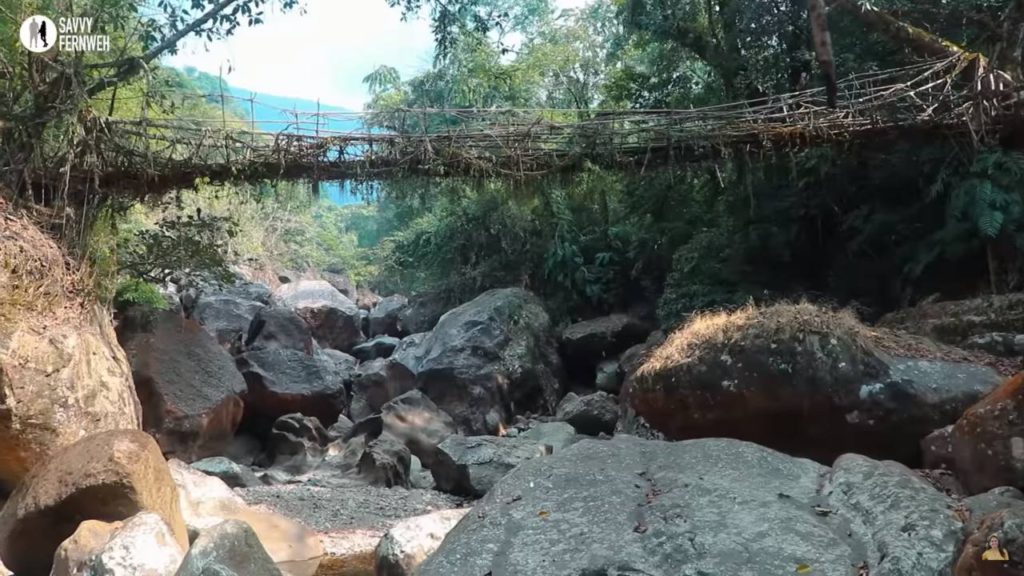
Shillong is roughly a 3-hour drive from Mawlynnong, which is near to the Bangladesh border. Visit this location to take in the magnificent view of the natural balancing rock, one of Mawlynnong’s top attractions. In fact, there are a lot of fascinating sites to see and things to do in this area, in addition to some welcoming homestays.
Conclusion:
There you have it, a step-by-step tutorial on how to get to Cherrapunjee S Double Decker Root Bridge, also known as Nongriat. Because it’s such a long journey, you shouldn’t take it lightly. Plan to leave early in the morning and be reasonably fit. At the very least, you’ll be able to state that you made it here after climbing 3,500 stairs each way, which will give you some bragging rights. The incredible memories will stay with you for a very long time.
